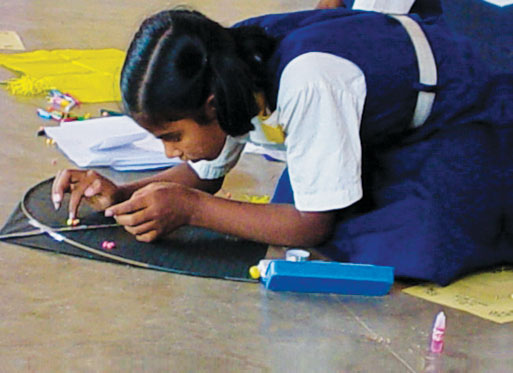The Process of Teaching and Learning
Seetha Anand Vaidyam
Education today is a race – for marks, to get a seat, to score at any cost. In this race, the entire focus seems to be on content. Teachers are focused on covering the syllabi within a specific period and students are focused on how much of that syllabi they can learn in a given time.
 Sadly, the methods adopted to teach/learn have taken a back seat. Students are equipped with the strategy to answer questions from their textbooks. Little attention is paid to the application of this knowledge. Students rarely understand the relevance of what they learn. Self-learning and the ‘skill to learn’ are concepts that schools are hardly aware of, let alone focused on.
Sadly, the methods adopted to teach/learn have taken a back seat. Students are equipped with the strategy to answer questions from their textbooks. Little attention is paid to the application of this knowledge. Students rarely understand the relevance of what they learn. Self-learning and the ‘skill to learn’ are concepts that schools are hardly aware of, let alone focused on.
The real objective of education is to gear students for life (not merely for examinations). However, newspaper reports of suicides among students who fear failure or poor performance, of individuals who are indifferent to the tasks they are called upon to perform (be it a civil engineer involved in building the infrastructure of the nation, or a doctor responsible for the well-being of his/her patients) – reflects what education distanced from reality can produce.
What do we mean by focus on the method of learning/teaching?
While there is quite a bit of focus on teaching, rarely do we try to decipher how students learn. All healthy individuals are inherently equipped with the urge to learn and know about things around them. It is found now that in the course of their school years a significant percentage of children lose interest in learning. Does this have something to do with the way we teach and the way in which students learn?
The teaching methods employed by schools give little or no scope for creative thinking and individual learning. Teaching, in most schools is restricted to lecturing and requires students to be only passive listeners. If you don’t allow children to create their own paths and expect them to follow an already laid path, how will they blossom?
Schools today are so caught up with pumping as much information as is possible in little minds that they hardly realise that their duty is not so much to burden students with information but to help them explore the relevance of that information in their lives. This attitude of schools and teachers is robbing the joy from learning.
‘Feed a man fish and you have equipped him for the day, teach him to fish and you have equipped him for life!’ This is something we all have to remember. Let us ask ourselves if we can transform our schools to become centres where true learning for life takes place and not just remain centres of information. This is not to diminish the importance of content but to have a more comprehensive picture of the teaching-learning process.
